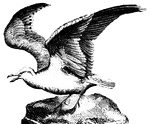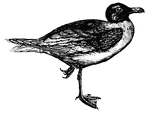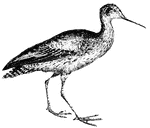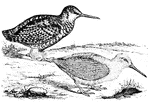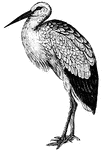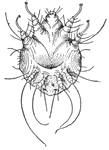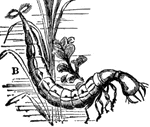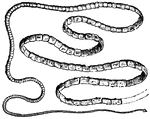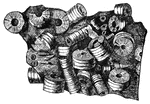
Caleb Cushing
(1800-1879) Lawyer and public official. Appointed commissioner to China and served in the Mexican War.…
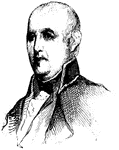
Colonel Isaac Shelby
(1750-1826) Soldier and Public official who fought important battles during the American Revolution.…

Thomas Sumter
(1734-1832) Public official and soldier that led campaigns during the American Revolutionary war.
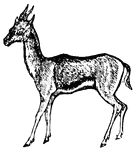
Gazelle
Most gazelle are found in Africa. Some inhabit SW Asia and N. Africa. They are graceful and swift runners…

Lemur
The lemur (Latin, lemures, ghosts) get their name from the fact that their movements are noiseless,…
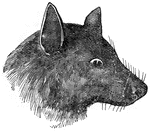
Kalong Bat
The kalong bat can have a wingspan up to five feet. Its head is like that of the fox, and it lives primarily…

Civet
There are several species of civet that live in Africa and Asia. All civets have scent-producing glands…
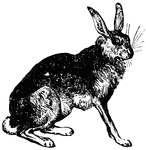
Hare
Hares are larger than rabbits, with longer ears and hind legs. They live above ground in nests. Hares…

Six-banded armadillo
Armadillos live on carrion, insects and fruit. They are all small, except for the Gigantic armadillo…

Heron
Herons are found on the edges of rivers, lakes and marshes and live on fishes, reptiles and sometimes…
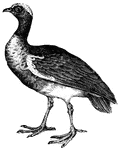
Screamer
Screamers live near moist marshy locations or sandy streams. They do not swim, but walk along the vegetation…
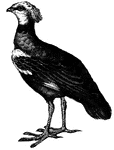
Screamer
Screamers live near moist marshy locations or sandy streams. They do not swim, but walk along the vegetation…
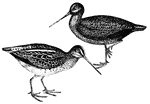
Snipe
The snipe does not live so solitary a life as the Woodcock; it is occasionally seen in flocks.

Heron
Herons are found on the edges of rivers, lakes and marshes and live on fishes, reptiles and sometimes…

Jacamar
Their habits are little known; but it is certain that they live isolated or in pairs, that they are…
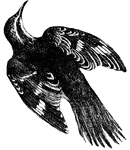
Creeper
The Creepers are small climbing birds which live and build their nests in the holes they bore in the…

Creeper
The Creepers are small climbing birds which live and build their nests in the holes they bore in the…

Creeper
The Creepers are small climbing birds which live and build their nests in the holes they bore in the…

Heron
Herons are found on the edges of rivers, lakes and marshes and live on fishes, reptiles and sometimes…
Gregarina
Gregarina is a parasitic protozoan. They live in the alimentary canal of crayfish, and certain insects.

Mole
Moles are well fitted for digging by the very large front feet and strong muscles of the front legs.…

Lizard
Lizards are good climbers and fast runners, and usually live in trees. Some can change their skin color…
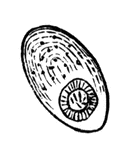
Tape-worm
Tape-worms live parasitically within other animals, and are often spoken of as Entozoa. This is an egg,…

Tape-worm
Tape-worms live parasitically within other animals, and are often spoken of as Entozoa. This is a bladder-worm,…

Tape-worm
Tape-worms live parasitically within other animals, and are often spoken of as Entozoa. This is a head…

Tape-worm
Tape-worms live parasitically within other animals, and are often spoken of as Entozoa. This is a single…
Tape-worm
Tape-worms live parasitically within other animals, and are often spoken of as Entozoa. This is a fragment…

Liver-fluke
Liver-flukes live parasitically within other animals, primarily birds and fishes. They are all more…

Hamster
Hamsters are rodents. They are adapted for rapid and continuous gnawing, and they live chiefly upon…
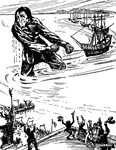
Gulliver in Victory
Gulliver takes the enemy's fleet, the Blefuscudians, and victoriously drags them into the royal port…

Evacuation of Corinth
Evacuation of Corinth, Mississippi- Confederate fortifications, from the northern angle, looking south-…

Battle of Pea Ridge
"Battle of Pea Ridge, Ark., fought March 6th, 7th and 8th, 1862, between the Federal forces, 13,000…

Bombardment of Fort Henry
"Bombardment of Fort Henry, Tennessee River, Tenn., by the Mississippi Flotilla, Flag Officer Foote,…

Fort Thompson
"Bombardment and capture of Fort Thompson, thirteen guns, near New Berne, on the Neuse River, by the…
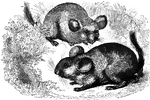
Chinchillas
"It is of a grayish color, and sufficiently long for spinning. The little animal which is produces it…

Confederate rams
"Confederate rams from Charleston Harbor attacking the Federal blockading squadron, January 31st, 1863.…
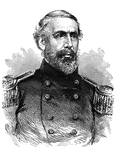
General J. H. Hobart Ward
"General Ward, born in New York city, June 17th, 1823, was educated at Trinity Collegiate School; enlisted…

Red River
"The war on the Red River. Admiral Porter's fleet passing through Colonel Bailey's Dam, above Alexandria,…
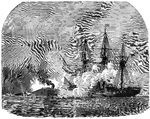
Mobile Harbor
"Farragut's naval victory in Mobile Harbor. The Hartford engaging the Confederate ram Tennessee.…
!["Assault of the Second Louisiana [African American] Regiment on the Confederate works at Fort Hudson, May 27th, 1863. The Battle of Fort Hudson was a severe and well-fought action. The Federal troops displayed their usual bravery, and were well handled by General Banks, driving the enemy to his second line of works. Of the [African American] regiments General Banks, in his official report, says: 'They answered every expectation. Their conduct was heroic. No troops could be more determined or more daring. They made during the day three charges upon the batteries of the enemy, suffering very heavy losses, and holding their position at nightfall with the other troops on the right of our line. The highest commendation is bestowed upon them by all officers in command on the right. Whatever doubt may have existed heretofore as to the efficiency of organizations of this character, the history of this day proves conclusively to those who were in a condition to observe the conduct of these regiments that the Government will find in this class of troops effective supporters and defenders. The severe test to which they were subjected, and the determined manner with which they encountered the enemy leave upon my mind no doubt of their ultimate success. They require only good officers, commands of limited numbers, and careful discipline to make them excellent soldiers.'"— Frank Leslie, 1896](https://etc.usf.edu/clipart/11800/11805/ft-hudson_11805_mth.gif)
Fort Hudson
"Assault of the Second Louisiana [African American] Regiment on the Confederate works at Fort Hudson,…


